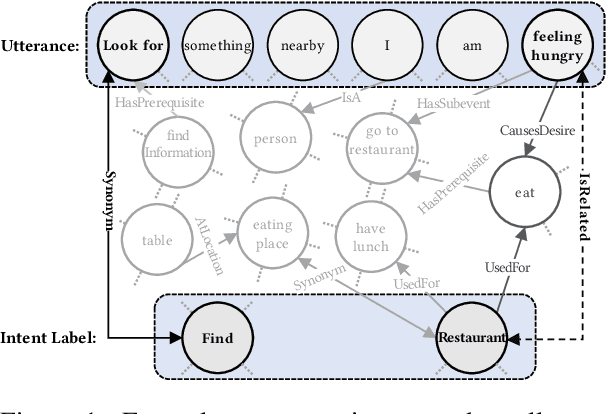Generalized Zero-shot Intent Detection via Commonsense Knowledge
Paper and Code
Feb 04, 2021



Identifying user intents from natural language utterances is a crucial step in conversational systems that has been extensively studied as a supervised classification problem. However, in practice, new intents emerge after deploying an intent detection model. Thus, these models should seamlessly adapt and classify utterances with both seen and unseen intents -- unseen intents emerge after deployment and they do not have training data. The few existing models that target this setting rely heavily on the scarcely available training data and overfit to seen intents data, resulting in a bias to misclassify utterances with unseen intents into seen ones. We propose RIDE: an intent detection model that leverages commonsense knowledge in an unsupervised fashion to overcome the issue of training data scarcity. RIDE computes robust and generalizable relationship meta-features that capture deep semantic relationships between utterances and intent labels; these features are computed by considering how the concepts in an utterance are linked to those in an intent label via commonsense knowledge. Our extensive experimental analysis on three widely-used intent detection benchmarks shows that relationship meta-features significantly increase the accuracy of detecting both seen and unseen intents and that RIDE outperforms the state-of-the-art model for unseen intents.
 Add to Chrome
Add to Chrome Add to Firefox
Add to Firefox Add to Edge
Add to Edge